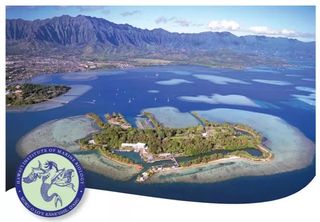Marine science researchers with the The University of Hawaiʻi at Mānoa are using drones to gain newfound insight into the behaviors, physical cost of migration and humanity’s impact on marine mammals.
We chat with Lars Bejder, Director of the Marine Mammal Research Program at The University of Hawaiʻi at Mānoa and Hawaii Institute of Marine Biology (www.mmrphawaii.org), about this innovative program.
Who: The University of Hawaiʻi at Mānoa, Marine Mammal Research Program
Where: Kaneohe, HI
What: Using Drones to Analyze Migrating Marine Mammals
Marine mammals are fascinating animals, some are resident, others (like most baleen whales) migrate. Those whales feed and breed in different habitats, so they have to migrate over large distances. When humpback whales leave their foraging habitats [in Alaska for breeding grounds in Hawaii], they might not feed for four or five months. They have a thick layer of blubber to sustain the costs of migration, giving birth, lactating and fattening up the calf before they make the journey back to the foraging grounds. They change their body composition quite dramatically. Using this drone program, we are finally able to quantify those changes. Preliminary results show lactating females are losing 35-45% of their body mass.
At issue is the conservation around these animals and how that relates to impacts of human activity. We use drones to follow these animals and getting repeated measurements throughout the breeding system, while working with the Alaska Whale Foundation to find some of the same animals to measure their volume as they change throughout the foraging season. Linking the whole cycle will allow us to work out the cost of living for a whale, so we can look at the bigger picture of what are the impacts of climate change and change of prey distributions on these animals. That's the overall goal for this project.


Positive Results

- Best Drones for Education 2020
- Meet the DJI RoboMaster S1, a Mini Tank Drone and Trojan Horse for Teaching Code
New technology is allowing us to answer questions we felt we'd never solve. Typically, dolphins or whales were approached by boat, so we only get a glimpse of them from the side. Launching the drones afforded a bird’s-eye view letting us see behaviors from above and more importantly, using custom-built altimeters and precise lenses to quantify the true size and volume of these animals. When you observe specific individuals repeatedly over time, you can see precisely how the animal’s health and condition changes, which is really important. Non-invasive suction cup tags bearing cameras, hydrophones and accelerometers help us understand how they move in three dimensional space and how they respond to stimuli. Coupled with the drone footage and cameras, we can observe fine details and the foraging behavior. We can see how they are capturing prey from the whale's perspective.
Biggest Challenge

The first hurdle was getting the animal ethics Institutional Animal Care and Use Committees’ (IACUCs) approval, then the federal approval to work with marine mammals. That’s a pretty large step to get through. Then there are the practical challenges.
One of those is clearly weather; we wouldn't work in more than 15 knot winds. The drones could handle it, but the water is so choppy that the images wouldn’t be of use to estimate size or accurately obtain measurements. You need to learn how to fly a drone, then how to fly a drone and capture it from a boat (usually you are flying and landing a drone from solid ground). In this situation, you have the added challenge of catching the drone from a moving object with swell and wind.
Finding Funding
I applied for an Equipment Grant from the Office of Naval Research to help equip my lab, so most of these drones were purchased through that grant. We are also collaborating with Stanford University and Hopkins Marine Lab on non-invasive suction cup tags to put on whales that have cameras, hydrophones and accelerometers.

Pro Tips
Drones are a hot topic, there are hundreds of drones out. Do a lot of homework on what tech you actually need to answer your question, what fits your purpose. There's no need to buy a Lamborghini if a Volkswagen will do. We have several types—some have very good altimeters and cameras which is key for estimating volume, but when we are doing an extended focal follow, you don't need those kind of lenses, you need an instrument that can stay in the air a long time. Figure out what you need from your instruments and choose wisely.
What’s Next
We’re keen to work with the Computing Department to help us develop 3D models of some of our measurements. There is a wide scope of potential spin-off projects. Artificial Intelligence (AI) could be developed to automate detection of the same individuals instead of having to be done by human eye. They could search footage and find the particular telling aspects of a fluke [markings on the tale, or fluke, are unique like fingerprints]. Visit www.mmrphawaii.org for the latest findings and developments.
Tech Tools
- DJI Inspire 2 unmanned aerial system (drone)
- CRYSTALSKY ULTRA 7.85INCH MONITOR
- OLYMPUS*25MM F/1.8 - MICRO 4/3 lens
- DJI ZENMUSE X5S CAMERA
Videos
*Acknowledgments to Martin Van Aswegan, and to Frederic Christiansen who pioneered how to analyze this data.

